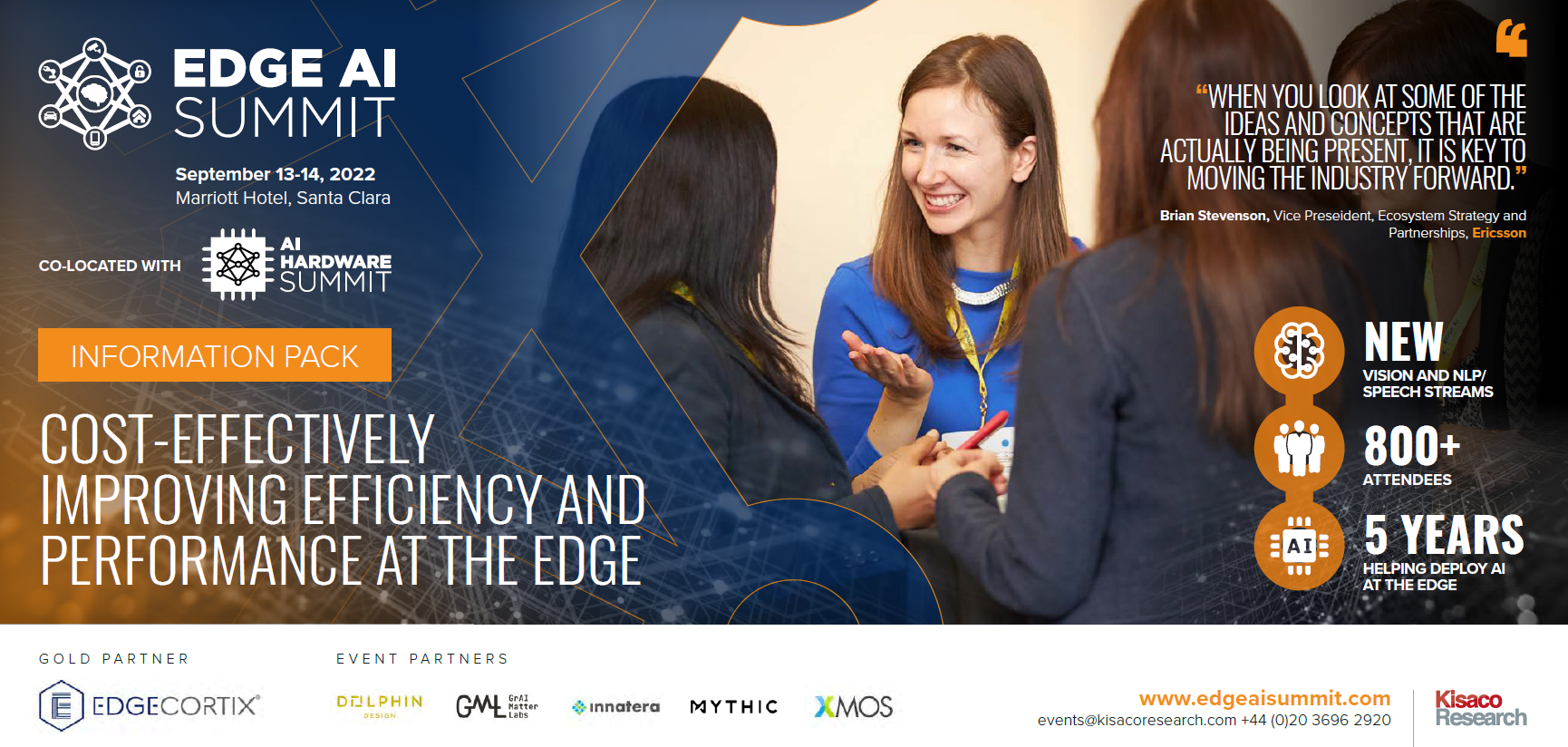Filter by:
Use the filters above to sort sessions by the topic most interesting to you, or filter by your job focus and see the sessions most relevant to your role.
Click the arrows to the right-hand side of a session title to see its abstract.
Whether you're involved as an enterprise adopters, OEMs, AI software, and hardware providers, there's something for everyone at this year's Edge AI Summit. We'll be adding content, speakers and networking sessions to the agenda between now and the event so keep checking back for updates.
Alternatively, you can download the information pack, and we'll send you automatic updates on agenda developments, new speakers and event news. The information pack also includes extra information on audience demographics and reasons why you should attend!

Vikas Chandra
Vikas Chandra is Director of AI Research at Facebook where he leads the On-device AI research focusing on AR and VR products. Prior to Facebook, he was Director of Applied Machine Learning at Arm Inc. He received his Ph.D. and M.S. degrees in Electrical and Computer Engineering from Carnegie Mellon University. He held the positions of Visiting Scholar (2011 – 2014) and Visiting Faculty (2016 - 2017) in the EE department at Stanford University. He has authored 70+ research publications and is an inventor on 40+ US and international patents. Dr. Chandra received the ACM-SIGDA Technical Leadership Award in 2009 and was invited to the 2017 Frontiers of Engineering Symposium organized by the National Academy of Engineering. He is a senior member of IEEE.
Retailers and Restaurants face unique challenges such as speed, quality of service, staff turnover, and accuracy. Evolving customer expectations—increasingly driven by new digital capabilities—are pushing brands to offer greater speed, convenience, and personalization.
Fortunately, artificial intelligence is helping to make the customer experience frictionless, fast, and significantly more pleasant. Leveraging AI-powered computer vision unlocks enormous value for operators eager to use technology to improve operational efficiency, deliver real-time visibility, and make smarter decisions.
But knowing where to start is always the big question. So, we’ve brought together the CEO of a cutting-edge AI software company, an executive from a global leader in electronic components distribution, an IoT expert from the world’s largest CPU manufacturer, and an Edge AI expert to talk about real-life applications of AI-enabled Retail and Restaurant solutions that are already paying big dividends.

Susan Sly
Susan Sly is the Co-CEO and cofounder of RadiusAI (RAI), an award-winning visual intelligence company specializing in the retail and healthcare sectors. RAI is currently implementing its smart retail solution at the edge for a national retailer with 1,000 locations.
RAI has been named one of the fastest growing startups in Phoenix three years in a row and won VentureBeat’s AI Innovation at the Edge Award in 2022, beating out several highly acclaimed technology companies.
Prior to cofounding RAI, Susan led channel sales teams in three sectors generating over $2 billion in revenue. In her spare time, Susan is the host of the highly acclaimed podcast, Raw and Real Entrepreneurship, mom of five, wife, and tech investor. Susan has appeared on CNN, CNBC, Fox, ABC Family, and is a member of the prestigious Forbes Business Council.

Bruce Mckinnon
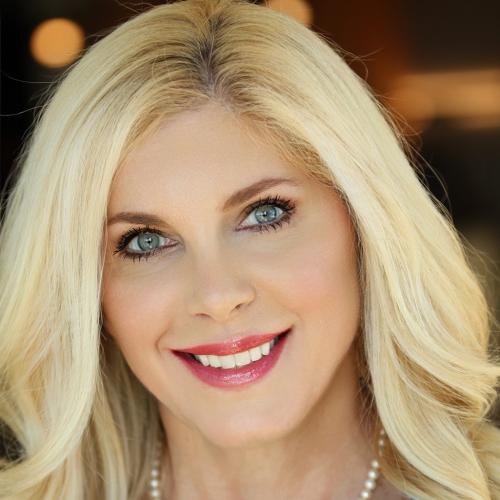
Andrea Huels
Andrea “Andi” Huels leads Lenovo’s Enterprise AI business in North America. A global go-to-market executive with expertise in artificial intelligence, machine learning, and data analytics, Andi helps F500 companies drive agility and re-invent their operations with AI. Her passion for evangelizing AI solutions inspires executives in retail, restaurants, CPG, supply chain, and manufacturing to think differently about how they can harness the power of artificial intelligence to make smarter decisions, increase operational efficiency, and enhance customer experience. A deep understanding of AI solutions, combined with her ability to cultivate technology ecosystems with software companies, GPU and CPU manufacturers, system integrators, and channel partners, enables Andi to become a trusted advisor to CXOs.
Prior to Lenovo, Andi served as Director of Business Development at Dematic, where she was instrumental in building the technology ecosystem necessary to deploy intelligent supply chain transformation to retailers, wholesalers, and manufacturers. Her background includes two decades of global strategy, growth, and innovation leadership roles with GE, ExxonMobil, Crane, Imerys, Omron, and General Mills.
Andi frequently speaks at industry conferences as a thought leader on Enterprise AI. Her recent appearances include NRF, National Restaurant Association Show, Restaurant Leadership Conference, NVIDIA’s GTC, Manifest, AI Business Connect, Project Voice, and Voice Summit.
Andi earned a BS in Management from Indiana University and holds a Certificate in AI & Business Strategy from MIT. An avid cyclist, she resides in Atlanta, Georgia with her four children and their English Mastiff, Penelope.

Kristen Call
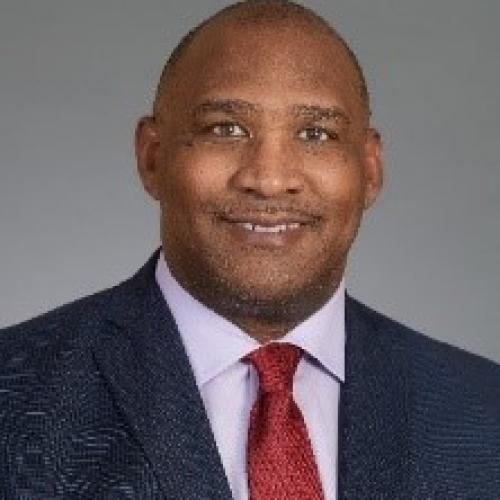
Burnie Legette
Burnie currently serves as Sales Director in SMG and manages a sales team supporting US Edge AI ISVs. Burnie is also a contributing member of Intel’s SW Center of Excellence (COE) team that reports directly to Intel CTO Greg Lavender. Burnie has been in the high-tech industry for 20+ years spending 15 of those years in the communications and networking sectors. Burnie officially joined Intel in November 2016 and has held various roles within IoTG - Technical Account Manager (3 years), AI specialist (1 year), and US AI ISV Sales Manager (1+ year). Starting in 2019, Burnie has been solely focused on Intel’s AI Initiative serving as an AI “Core Team” member that helped define Intel’s Edge AI sales strategy, AI organizational support structure, and internal processes which also includes product development input. Burnie holds a BS in Electrical Engineering from the University of Michigan, an MBA from Babson College (Management/Finance), a certificate in ‘Behavioral Economics’ from the Harvard Business School, and also holds a Master of Divinity (MDIV) from Gordon Conwell Theological Seminary. In addition, Burnie is active contributor to Intel’s commitment to diversity and inclusion by assisting in minority college recruiting and minority retainment initiatives. Burnie is married to his beautiful wife Michelle and they have 3 children. In his free time Burnie enjoys reading, working out, entrepreneurship, and community service.
The adoption of edge computing is enormous in the automotive industry. So, what lessons have been learned that other industries can adopt and adapt for their own rapid innovation?
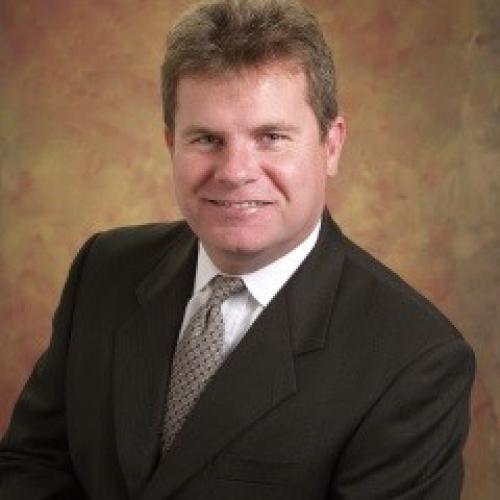
Roger Berg
Roger Berg is Vice President of DENSO’s North American Research and Development group. His latest research interests and responsibilities include next generation connectivity, mobile edge computing, connected automated vehicles and decentralized ledger technologies.
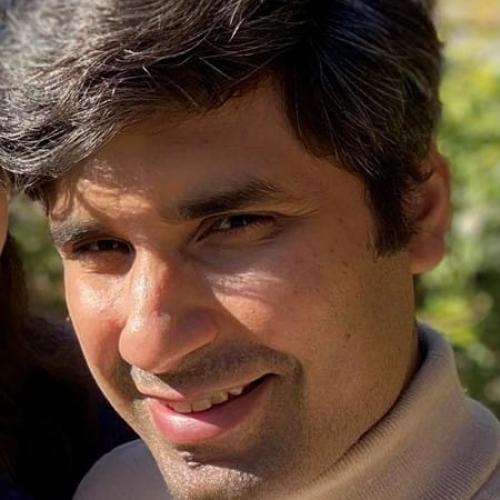
Gaurav Singh
Gaurav is part of the Nemo product team at Ridecell, and does advanced AI-based data analytics for ADAS & AD data. He brings a strong AI and machine learning background to his role having previously worked on developing software for autonomous driving and computer vision applications. Gaurav is a Masters in Robotics from Carnegie Mellon University.
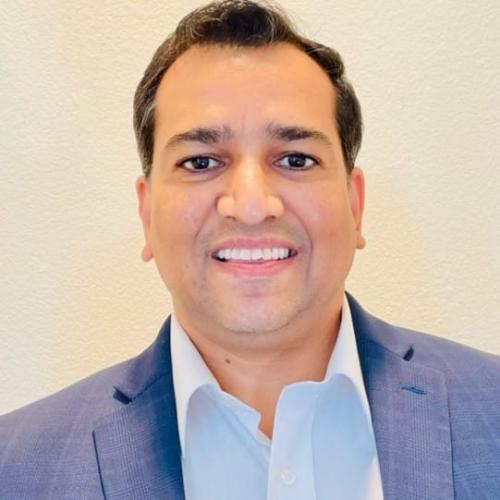
Prashant Tiwari

Jake Hillard
Jake Hillard is an expert in Signal Processing and has launched multiple laser satellite missions to space. He is a Peter Theil Fellow and currently the CEO and Co-Founder of Red Leader Technologies
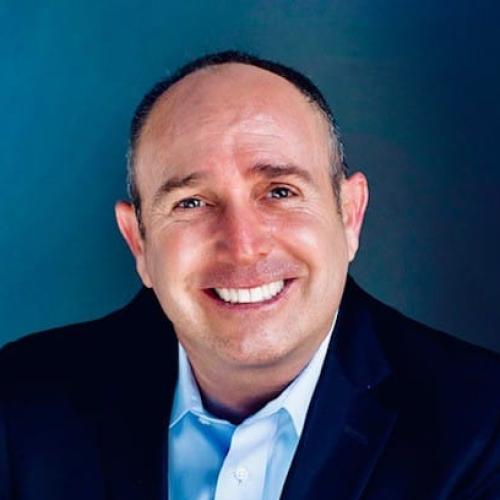
Rob Telson
Rob Telson brings over 25 years of sales expertise in licensing intellectual property and selling EDA technology across multiple vertical markets. He has had success developing sales and support organizations at small, midsize, and large companies. At ARM, a global semiconductor and software design company, Rob was Vice President of Foundry Sales worldwide and prior was Vice President of Sales for the Americas. At Synopsys, he was responsible for building and developing a business focused on disruptive technologies in the semiconductor space. Rob has been impactful on driving the growth and demand of BrainChip’s technology leading Worldwide Sales and Marketing and now developing and leading the Ecosystem and Partnerships at BrainChip. Rob holds a BS in political science from the University of Arizona and a Program for Leadership Development certificate from Harvard Business School.
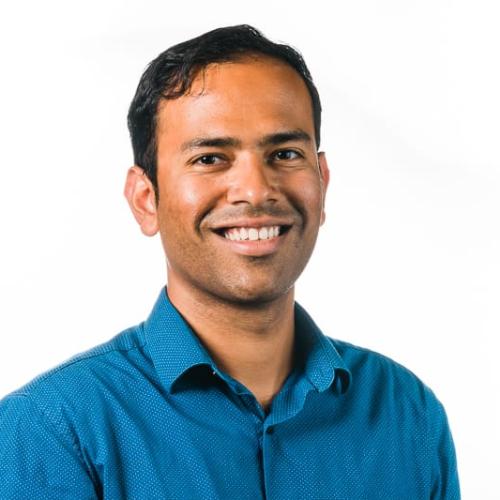
Pushpak Pujari
Pushpak leads Product Management at Verkada where he runs their Cloud Connected Security Camera product lines. He is responsible for using AI and Computer Vision on the camera to improve video and analytics capabilities and reduce incidence response time by surfacing only meaningful events in real-time, with minimal impact on bandwidth.
Before Verkada, Pushpak led Product Management at Amazon where he built the end-to-end privacy-preserving ML platform at Amazon Alexa, and launched a no-code platform to design and deploy IoT automation workflows on edge devices at Amazon Web Services (AWS). Previous to Amazon, he spent 4 years at Sony in Japan building Sony’s flagship mirrorless cameras.
Pushpak has extensive experience of starting, running and growing multi-million dollar products used by millions of users at the fastest growing companies in the US and the world. He holds an MBA from Wharton and Bachelors in Electrical Engineering from IIT Delhi, India

Niels Kasch

Peter Suma
Peter is a co-CEO of Applied Brain Research Inc. Prior to ABR, Peter led start-ups in robotics and financial services as well as managed two seed venture capital funds. Peter holds degrees in systems engineering, science, law and business.

Patricia Thaine
- How does computer vision work?
- Overview of use cases
- References
- Short slide of offering
- Rule Based Engine
- Alert system or reporting
- Deployment & implementation strategies

Anthony Valle
Anthony Valle is a Senior Pre-Sales Engineer for North America and Latin America at Ipsotek, an Atos company. Anthony has over 20 years of experience in IT and security technology solutions for the rapidly growing tech-based world. He works closely with clients in developing solutions for AI at the Edge, utilizing a patented Scenario-Based Rule Engine (SBRE), a powerful tool to precisely define behaviors of interest as they would unfold in the real-world dynamic and complex environment.
Prior to joining Atos, he performed first Sales Engineering and later Application engineering roles for Avigilon, one of the world's largest security manufacturers. Throughout his career, he has held key management positions within the industry and sought many certifications to further his career in security technology.
ABR has designed an innovative chip, the ABR TSP (Time Series Processor - https://appliedbrainresearch.com/products/tsp/ ), for speech recognition, natural language processing, and any other time series data. The TSP has the goal of delivering cloud-quality time-series inference for use in sensor data processing and dialog systems implementations at the edge. For speech processing, ABR's TSP will run BERT-sized NLP models at less than 60 mW SoC level power. Device makers can deliver low-power, low-latency, low-cost, real-time voice interfaces that save costs over CPUs and GPUs. For the same price as a keyword spotter chip, the TSP can move speech interactions to natural conversation from keyword-spotting, increasing customer satisfaction. For IoT uses, the TSP delivers larger models comparable with CPUs and GPUs, for less cost and with more accuracy and lower latency than using an MPU. ABR's TSP implements ABR's patented Legendre Memory Unit (LMU) algorithm which enables smaller ASR and NLP models. We will discuss ABR's LMU algorithm and the uses of the TSP chip for edge NLP and ASR, with examples.

Peter Suma
Peter is a co-CEO of Applied Brain Research Inc. Prior to ABR, Peter led start-ups in robotics and financial services as well as managed two seed venture capital funds. Peter holds degrees in systems engineering, science, law and business.
Machine vision workloads are complex, and their performance requirements often present challenges in areas like latency, security, energy use and reliability. Hierarchal partitioning of those workloads often makes sense, where the machine vision software is split into multiple stages (for example, contrast enhancement, feature extraction, object recognition, threat detection), which are run at different layers of the [intelligent camera -> edge node -> MEC -> cloud] hierarchy.
This talk will introduce the hierarchal cloud - edge architecture, and discuss the properties and capabilities of its many layers. It will propose an example segmentation of machine vision algorithms, and investigate the tradeoffs of how we can map them onto the various layers of processing available in the hierarchy. Finally, it will look at the dual flows of model training and inference for AI applications, and discuss which portions of those flows make sense in different edge layers, and how they can be secured, orchestrated and managed.

Charles Byers
The size of the Deep Learning and AI models has increased substantially within the past couple of years. With recent advancements specifically around NLP/Conversational AI and Computer Vision applications powered by large scale models such as BERT, GPT-3 and Vision Transformers (ViT) having hundreds of millions to billions of parameters, deployment and management of such models is becoming challenging. In this talk, I will go over the state-of-the-art models, their Edge AI applications, deployment concerns and approaches on how to leverage them on Edge computing. I will share my experience of deploying such large models from Amazon AI, Uber AI, and Got It AI.
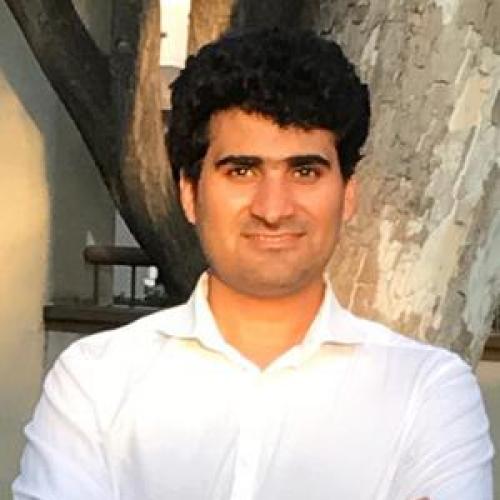
Chandra Khatri
Chandra Khatri is the Co-Founder at Got It AI, wherein, his team is building the world's first fully autonomous Conversational AI technology. Under his leadership, Got It AI is pushing the boundaries of the Conversational AI ecosystem and delivering the next generation of automation products. Prior to Got-It, Chandra was leading various kinds of applied research groups at Uber AI such as Conversational AI, Multi-modal AI, and Recommendation Systems.
Prior to Uber AI, he was leading R&D for the Alexa Prize Competition (Alexa AI) at Amazon, wherein he got the opportunity to significantly advance the field of Conversational AI, particularly Open-domain Dialog Systems, which is considered as the holy-grail of Conversational AI and is one of the open-ended problems in AI. Prior to Alexa AI, he was driving NLP, Deep Learning, and Recommendation Systems related Applied Research at eBay. He graduated from Georgia Tech with a specialization in Deep Learning in 2015 and holds an undergraduate degree from BITS Pilani, India.
His current areas of research include Artificial and General Intelligence, Reinforcement Learning, Language Understanding, Conversational AI, Multi-modal and Human-agent Interactions, and Introducing Common Sense within Artificial Agents.
The future of AI begins at the sensor. Join BrainChip for this exploration of relevant data propagation, regions of interest and making the applications of tomorrow more efficient today by processing at the sensor.

Denis Gudovskiy
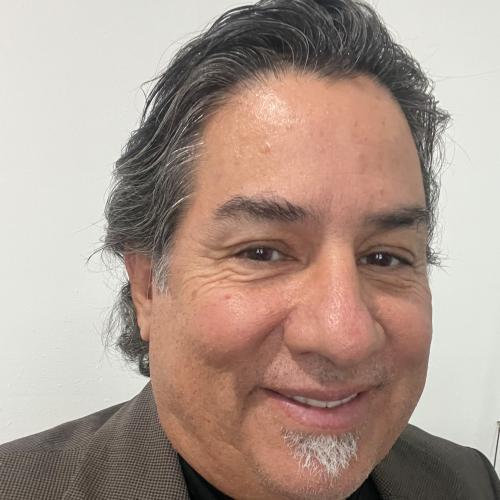
Todd Vierra
Todd brings more than 25 years of engineering and technical sales expertise in chip design, electronic design automation, and intellectual property. He joined BrainChip from ARM, where he was director of field sales engineers for more than 15 years, providing support for ARM processors in the Machine Learning, Internet of Things (IoT), embedded and automotive, client/mobile, and enterprise business divisions. He spent nearly seven years in high-speed ASIC design at Applied Micro Systems, and 4 years at Cadence Design Systems. At Nurlogic Design Inc., and Artisan Components Todd led the technical sales teams for digital and high-speed Analog IP. He has a BS Electrical, Electronics, and Communications Engineering and an MBA from Coleman University.

Denis Gudovskiy

Chandra Khatri
Chandra Khatri is the Co-Founder at Got It AI, wherein, his team is building the world's first fully autonomous Conversational AI technology. Under his leadership, Got It AI is pushing the boundaries of the Conversational AI ecosystem and delivering the next generation of automation products. Prior to Got-It, Chandra was leading various kinds of applied research groups at Uber AI such as Conversational AI, Multi-modal AI, and Recommendation Systems.
Prior to Uber AI, he was leading R&D for the Alexa Prize Competition (Alexa AI) at Amazon, wherein he got the opportunity to significantly advance the field of Conversational AI, particularly Open-domain Dialog Systems, which is considered as the holy-grail of Conversational AI and is one of the open-ended problems in AI. Prior to Alexa AI, he was driving NLP, Deep Learning, and Recommendation Systems related Applied Research at eBay. He graduated from Georgia Tech with a specialization in Deep Learning in 2015 and holds an undergraduate degree from BITS Pilani, India.
His current areas of research include Artificial and General Intelligence, Reinforcement Learning, Language Understanding, Conversational AI, Multi-modal and Human-agent Interactions, and Introducing Common Sense within Artificial Agents.

David Martin

Mark Kurtz
Leader of ML and engineering teams focused on the design, development, and implementation of cutting-edge technologies and products. With over 12 years of experience in software engineering and machine learning, well-practiced in building and managing teams for both closed source and open source software solutions. Currently the Director of Machine Learning at Neural Magic, Mark is focused on lowering the cost, improving the performance, and increasing the adoption of deep learning technologies through SOTA research and engineering. An active GitHub contributor, blogger, and researcher with published papers in top ML conferences.
Neural Magic
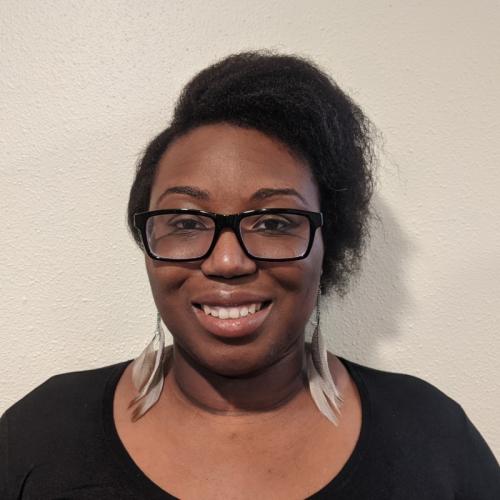
Bernease Herman
Bernease Herman is a Sr. Data Scientist at WhyLabs, the AI Observability company, and a research scientist at the University of Washington eScience Institute. At WhyLabs, she is building model and data monitoring solutions using approximate statistics techniques. Earlier in her career, Bernease built ML-driven solutions for inventory planning at Amazon and conducted quantitative research at Morgan Stanley. Her academic research focuses on machine learning evaluation and interpretability with specialty on synthetic data and societal implications. Bernease serves as faculty for the University of Washington Master’s Program in Data Science program and as chair of the Rigorous Evaluation for AI Systems (REAIS) workshop series. She has published work in top machine learning conferences and workshops such as NeurIPS, ICLR, and FAccT. She is a PhD student at the University of Washington and holds a Bachelor’s degree in mathematics and statistics from the University of Michigan.

Jack Kang
Spiking neural networks are central to the brain’s processing of sensory data, and are key to its ability to recognize spatial and time-series patterns quickly and efficiently.
Innatera’s Spiking Neural Processor (SNP) enables always-on AI applications based on programmable, energy-efficient acceleration of spiking neural networks. It achieves unprecedented AI-based functions at the sensor-edge within a sub-milliwatt power and sub-millisecond latency envelope, using spiking models 100x smaller than conventional neural networks. In this talk, CEO Dr. Sumeet Kumar explores the capabilities of the SNP, and how these link with the critical requirements of sensing use-cases in the consumer and industrial domains. Further, Dr. Kumar provides insight into Innatera’s Talamo software development kit which brings the power and familiarity of PyTorch to spiking neural networks.

Sumeet Kumar
Dr. Sumeet Kumar is CEO of Innatera Nanosystems, the pioneering Dutch neuromorphic processor company. Dr. Kumar holds an MSc and PhD in Microelectronics from the Delft University of Technology, The Netherlands. He was previously with Intel, where he worked with the Imaging and Camera Technologies Group developing domain-specific tools for the development of complex media processor architectures. At Delft, Dr. Kumar is credited with creating two highly-successful European R&D programmes developing energy-efficient compute hardware for highly automated vehicles, together with organizations including Infineon, NXP, and BMW, among others. He was also responsible for leading industry-focused research on power-efficient multiprocessors and computational neuroscience.
New for 2022, these discussion groups will allow attendees to delve into industry focused debate exploring the challenges and innovation driving edge AI across four specific industries.

Roger Berg
Roger Berg is Vice President of DENSO’s North American Research and Development group. His latest research interests and responsibilities include next generation connectivity, mobile edge computing, connected automated vehicles and decentralized ledger technologies.

Gaurav Singh
Gaurav is part of the Nemo product team at Ridecell, and does advanced AI-based data analytics for ADAS & AD data. He brings a strong AI and machine learning background to his role having previously worked on developing software for autonomous driving and computer vision applications. Gaurav is a Masters in Robotics from Carnegie Mellon University.

Prashant Tiwari
New for 2022, these discussion groups will allow attendees to delve into industry focused debate exploring the challenges and innovation driving edge AI across four specific industries.
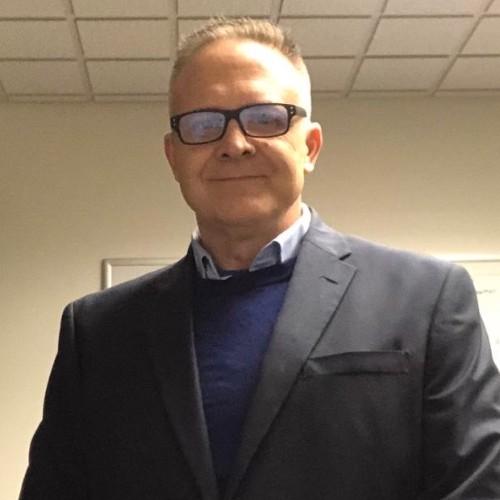
Christopher Nichols
Christopher Nichols is Director of IT/OT Resiliency & Support at Stanley Black & Decker, Inc. He has been employed by the Fortune 500 manufacturer, Stanley Black & Decker for over seven years, and is currently Director of IT/OT Resiliency & Support. In this role, he is responsible for deploying Level 2/3 system architectures and connecting all other level systems to level2/3, while supporting them. Additionally, he manages remediation with Edge components, and deploys servers and connectivity for all OT-Related systems, plus Level 1 support of all OT-Related SW applications.

Dominic Pajak
Dominic Pajak started as an engineer in Arm's CPU group in Cambridge, UK. He went on to launch energy-efficient processors that now ship in billions of electronic devices every year. Dominic has consulted with major OEMs in the automotive, consumer and industrial segments but is a big believer in making embedded technology accessible to everyone. Later at Arduino he led a collaboration with Google to launch the first developer-friendly Tiny ML library. Today as VP Developers at Ready Robotics he is working on connecting software innovators with industry-proven robotics hardware. Dominic holds a PhD in Computer Science from University of Leeds, UK.

Jake Hillard
Jake Hillard is an expert in Signal Processing and has launched multiple laser satellite missions to space. He is a Peter Theil Fellow and currently the CEO and Co-Founder of Red Leader Technologies

Sven Brunner
Sven is founder and CEO of holo|one, a leading Mixed Reality software company. holo|one offers a standardized Mixed Reality collaboration platform targeting the high-value enterprise use cases – remote assistance, workflow guidance and live collaboration. Their solution has been adopted across the globe by Fortune 500 companies like Micron, Lenovo and the Renault Group, along with garnering several awards and accolades.
Before founding holo|one, Sven worked as a software engineer and product manager at Disney Research, ETH Zurich, and his own consulting firm. Sven holds a master’s degree in informatics from the University of Zurich and is a recipient of the Swiss National Bank’s Economics Award.

Anthony Valle
Anthony Valle is a Senior Pre-Sales Engineer for North America and Latin America at Ipsotek, an Atos company. Anthony has over 20 years of experience in IT and security technology solutions for the rapidly growing tech-based world. He works closely with clients in developing solutions for AI at the Edge, utilizing a patented Scenario-Based Rule Engine (SBRE), a powerful tool to precisely define behaviors of interest as they would unfold in the real-world dynamic and complex environment.
Prior to joining Atos, he performed first Sales Engineering and later Application engineering roles for Avigilon, one of the world's largest security manufacturers. Throughout his career, he has held key management positions within the industry and sought many certifications to further his career in security technology.
New for 2022, these discussion groups will allow attendees to delve into industry focused debate exploring the challenges and innovation driving edge AI across four specific industries.
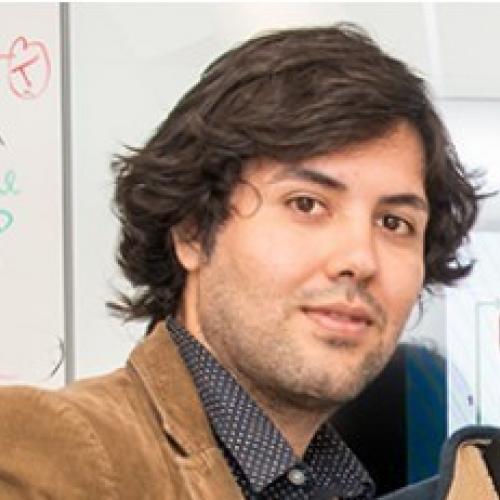
Hooman Sedghamiz
Hooman Sedghamiz is Director of AI & ML at Bayer. He has lead algorithm development and generated valuable insights to improve medical products ranging from implantable, wearable medical and imaging devices to bioinformatics and pharmaceutical products for a variety of multinational medical companies.
He has lead projects, data science teams and developed algorithms for closed loop active medical implants (e.g. Pacemakers, cochlear and retinal implants) as well as advanced computational biology to study the time evolution of cellular networks associated with cancer , depression and other illnesses.
His experience in healthcare also extends to image processing for Computer Tomography (CT), iX-Ray (Interventional X-Ray) as well as signal processing of physiological signals such as ECG, EMG, EEG and ACC.
Recently, his team has been working on cutting edge natural language processing and developed cutting edge models to address the healthcare challenges dealing with textual data.
- Using AI to evaluate the demographic population and trial operational performance trade offs of exclusion of non-safety required chronic conditions in the eligibility criteria
- Benchmarking and differentiating between Schedule of Assessment(SoA) procedures relative to different time periods and peer groups to drive greater operational efficiency
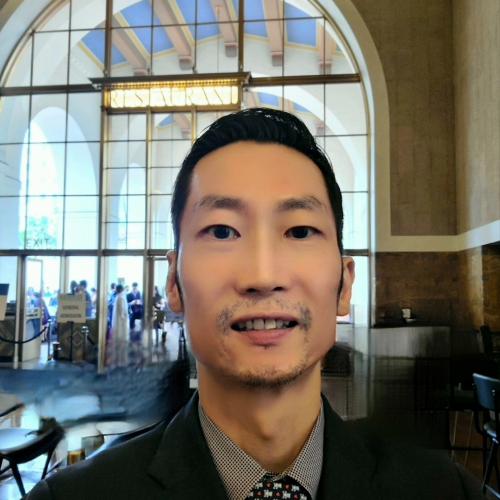
Michael Dandrea
Today, vision models run everywhere. For ML Engineers who operate ML models in production this poses an interesting challenge - how do we monitor model, sensor, and data health on the edge? This talk will present an open source library that can be used to instrument ML inference at the edge and discuss how monitoring can be implemented for ML models deployed to a fleet of devices.

Alessya Visnjic
Alessya Visnjic is the CEO of WhyLabs, the AI Observability company building the interface between AI & human operators. Prior to WhyLabs, Alessya was a CTO-in-residence at the Allen Institute for AI, where she evaluated commercial potential for the latest AI research. Earlier, Alessya spent 9 years at Amazon leading ML adoption & tooling efforts. Alessya is also the founder of Rsqrd AI, a global community of 1,000+ AI practitioners who are making AI technology Robust & Responsible.
Qualcomm is leading the realization of the Connected Intelligent Edge, where the convergence of wireless connectivity, efficient computing and distributed AI will power the devices and experiences that you deserve. In this talk, we’ll explore how Qualcomm is deploying on device AI across diverse edge products in markets including mobile, automotive, XR, IoT, robotics and PCs. We will also explore our recently announced Qualcomm AI Stack, a comprehensive AI software solution for OEMs and developers. For the first time, a single AI software portfolio works on every Qualcomm Technologies platform spanning the wide range of Connected Intelligent Edge products.
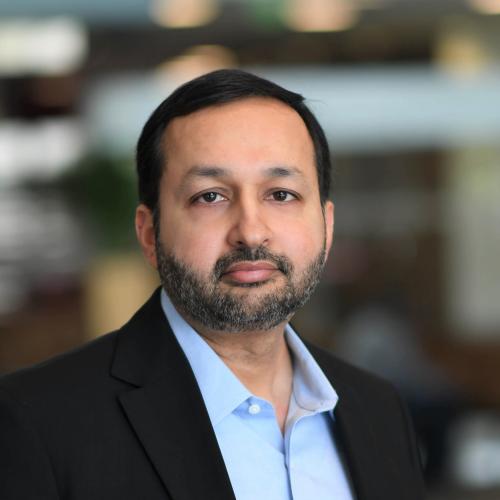
Ziad Asghar
Ziad Asghar is Vice President, Product Management at Qualcomm Technologies, Inc (QTI). He leads Snapdragon roadmap planning and Application processor technologies, covering all QC product lines. Ziad drives the definition of the products ensuring that our products lead in technology and enable best in class user experiences while making tradeoffs between features, power, performance and cost. He also leads Application Processor technologies including Artificial Intelligence, Camera, Graphics, CPU, Audio, Video and Security. He also has responsibility for Competitive Analysis. Ziad works across all teams including engineering and product management to ensure that we have the leading roadmap in the industry and continue to set the standard on all application processor technologies. He works across all business units including Mobile, Automotive, Compute, XR, Edge Cloud and IoT.
He has more than 20 years of experience in the wireless semiconductor industry where he has held a broad set of leadership positions from R&D to product management. Prior to joining Qualcomm, Ziad was at Texas Instruments where he worked on systems design of UMTS & LTE and OMAP Product Management.
Ziad holds an MBA from UCSD and master’s degrees in electrical engineering from Purdue University and Southern Methodist University.
Together, a panel of domain experts will look beyond current limitations, creating a roadmap for the future at the edge and exploring what they would want to achieve if technological barriers were removed.
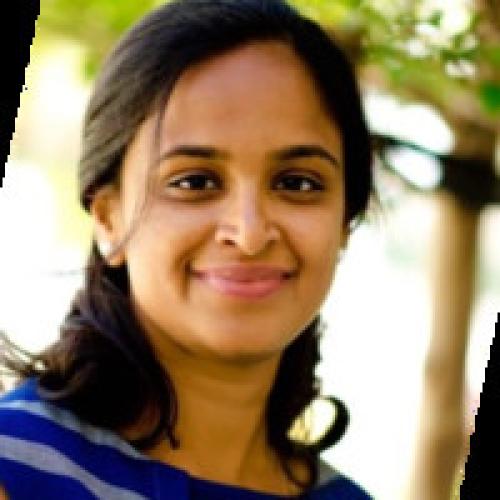
Gayathri Radhakrishnan
Gayathri is currently Partner at Hitachi Ventures. Prior to that, she was with Micron Ventures, actively investing in startups that apply AI to solve critical problems in the areas of Manufacturing, Healthcare and Automotive. She brings over 20 years of multi-disciplinary experience across product management, product marketing, corporate strategy, M&A and venture investments in large Fortune 500 companies such as Dell and Corning and in startups. She has also worked as an early stage investor at Earlybird Venture Capital, a premier European venture capital fund based in Germany. She has a Masters in EE from The Ohio State University and MBA from INSEAD in France. She is also a Kauffman Fellow - Class 16.
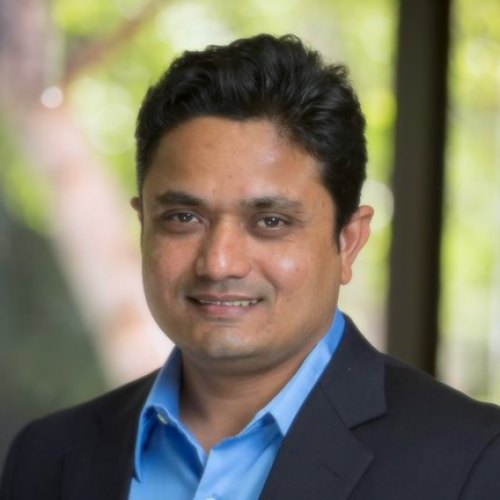
Sandeep Bandil

Jordan Gosselin

Vadim Parizher
In this session, XMOS will highlight the way in which they are revolutionising the automotive electronics industry with an accurate, low-power and cost-efficient automatic licence plate recognition (ALPR) reference solution. Benefitting from XMOS’ xcore®. ai silicon, the solution enables service providers to take parking management from a complex, resource-intensive system to one employing simple on-device AI. Using design principles that have only recently become feasible to deploy, XMOS will outline how they eliminate the cost, power and complexity challenges associated with traditional ALPR applications.
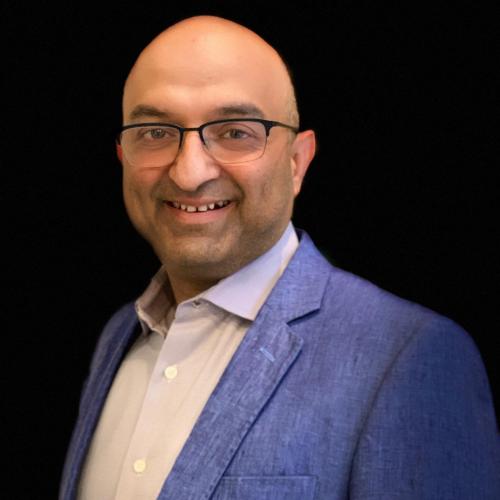
Aneet Chopra
Aneet drives partner engagement, strategic account management and helps shape the forward-looking roadmap for XMOS.
He has extensive experience across the electronics industry. His career has centred around building and transforming organisations with world class capabilities for innovation, technology and service. He has worked across engineering, operations and sales, skilfully leading cross-functional teams from strategy to execution, latterly as General Manager, Compute Vision for Intel. He has played a key role in chip development and ecosystem transformation for the IoT. Aneet worked for Netboost during its acquisition by Intel and was involved in the Movidius acquisition, leading the integration into Intel. Aneet is a board advisor for Nimo Planet, an AR glasses company.
Aneet holds an honours degree from University of California, Davis and an MBA from Wharton School, University of Pennsylvania.

Ingolf Held
Mr. Ingolf Held has been Chief Executive Officer of GrAI Matter Labs (GML) since January 2018. Prior to GML, he was responsible for technology strategy and product marketing of imaging and computer vision at Intel. He holds an MScEE from Erlangen University and an MBA from Rotterdam School of Management.
Edge cloud ends the conflict of edge vs cloud but when the option is there to use the cloud, should you? This session will explore the winning combination, how experts are overcoming privacy issues and the wealth of opportunities presented by connectivity.
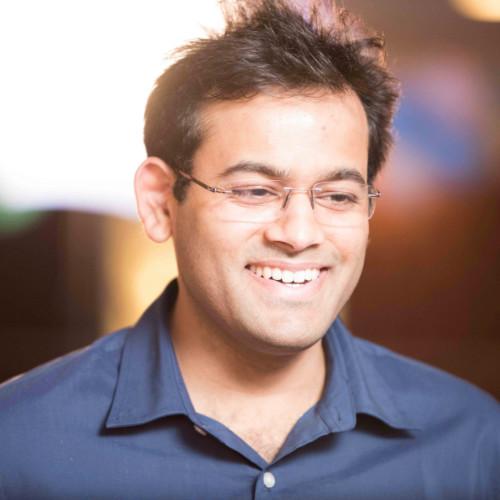
Rakshit Agrawal

Charles Byers

Prasad Akella
Dr. Prasad Akella, founder and chairman of the Drishti board, is creating his third massive market category that uses technology to extend human capabilities. In the 1990s, Prasad led the General Motors team that built the world’s first collaborative robots (“cobots,” projected to be a $12B market by 2025). In the early 2000s, as cofounder of the social networking pioneer Spoke, he envisioned and helped build the first massive social graph — a category now worth trillions. Today, at Drishti, he is working to combine the cognition of AI with the flexibility of humans in factories in the form of AI-powered production. Prasad is based in Mountain View, California.
Designing hardware architectures for artificial intelligence acceleration (AI) at the edge is hard, especially for achieving the combination of high energy-efficiency and performance. The reason Edge AI is so difficult today, is that it’s really a systems challenge, with a heterogenous mixture of software, hardware processors and diverse applications. Codesigning a robust sy stem software stack that works across such heterogeneity, together with an efficient and scalable processor architecture is often neglected and poses a bigger challenge.
In this talk we will describe howEdgeCortix is bridging this software & hardware divide, going beyond theoretical performance metrics, with the combination of a robust compiler, scheduler, runtime engine, and a reconfigurable co-processor. Using edge AI use-case examples, this presentation will describe how the combination of our MERA™ software (framework) and first-generation SAKURA-AI™ co-processor achieves high efficiency, while also effectively hiding the hardware complexity, delivering a compelling solution tailored for the needs of todays edge AI application developers.

Sakyasingha Dasgupta
Sakya is the founder and Chief Executive officer of EdgeCortix. He is an artificial intelligence (AI) and machine learning technologist, entrepreneur, and engineer with over a decade of experience in taking cutting edge AI research from ideation stage to scalable products, across different industry verticals. He has lead teams at global companies like Microsoft and IBM Research / IBM Japan, along with national research labs like RIKEN Japan and the Max Planck Institute Germany. Previously, he helped establish and lead the technology division at lean startups in Japan and Singapore, in semiconductor technology, robotics and Fintech sectors. Sakya is the inventor of over 20 patents and has published widely on machine learning and AI with over 1,000 citations.
Sakya holds a PhD. in Physics of Complex Systems from the Max Planck Institute in Germany, along with Masters in Artificial Intelligence from The University of Edinburgh and a Bachelors of Computer Engineering. Prior to founding EdgeCortix he completed his entrepreneurship studies from the MIT Sloan School of Management.
Achieving full optimization requires co-design and co-optimization of AI algorithms and the hardware platforms where they will be executed. This panel will explore the benefits and potential of such co-design approaches.

Subutai Ahmad
Subutai is passionate about neuroscience, deep learning, and building intelligent systems. An accomplished technologist, he has been instrumental in driving Numenta’s research, technology and business since 2005. He previously served as VP Engineering at YesVideo where he helped grow the company from a three-person start-up to a leader in automated digital media authoring. In 1997, Subutai co-founded ePlanet Interactive which developed the IntelPlay Me2Cam, the first computer vision product developed for consumers. Subutai holds a B.S. in Computer Science from Cornell University, and a Ph.D in Computer Science from the University of Illinois at Urbana-Champaign.
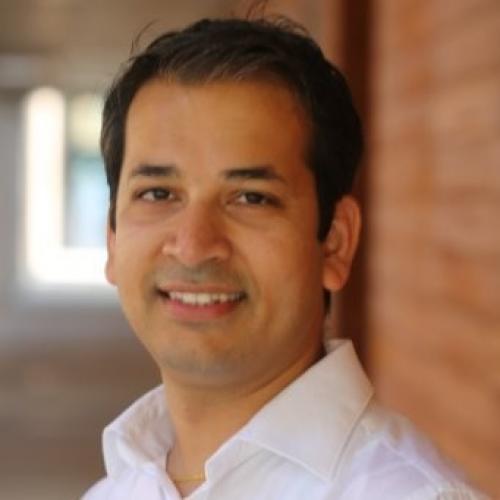
Anshumali Shrivastava
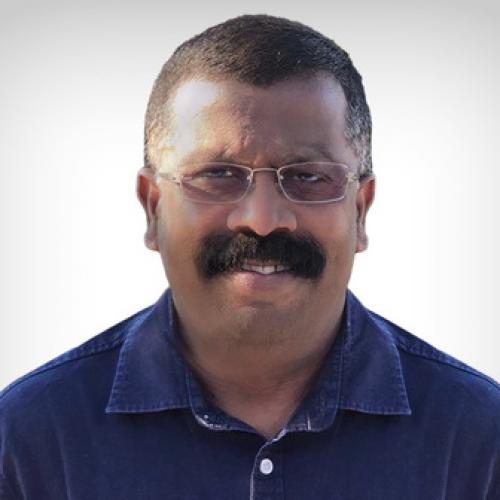
Godwin Maben
Edge AI is going to play a significant role in many areas such as automotive, smart home, smart cities, education, robotics, and surveillance, to name a few. The past few years have seen a rise in the number of HW options designed for accelerating AI inference at the edge. These multiple HW options, however, have made application development for the edge complicated. Each HW option comes with its own inference runtime, model porting SW, operator support, optimizations, and model zoo making it a time consuming effort to evaluate the HW. Performance metrics are not standardized across HW options and even for a fixed HW, they vary depending on the model and the host system. All these factors make evaluating edge HW a challenging task. In this talk, we will provide an overview of these challenges as well as our attempts to alleviate these problems.

Shashi Kiran Chilappagari
Shashi Chilappagari is the Co-Founder and Chief Architect at DeGirum Corp., a fabless semiconductor company building complete AI solutions for the edge. Prior to DeGirum, he was the Director of SSD Architecture at Marvell Semiconductor Inc. Shashi has B. Tech and M. Tech degrees from Indian Institute of Technology, Madras, India and Ph.D. from the University of Arizona, Tucson, Arizona.
The edge and embedded AI market is diverse and distributed, where systems that adopted industry standards have accelerated growth and lowered the barrier to entry.
With the emergence of AI accelerators and systems, it is important to learn from what has worked in the embedded space and leverage standards that enable developers and applications, reduce risk, and accelerate time to market. In this talk, we will outline some of the challenges to AI system adoption and how Flex Logix is working to make AI customization and deployment easier.

Barrie Mullins
Barrie has 25+ years of experience working with edge, embedded and AI systems across multiple industries including industrial, automotive, robotics, storage, and communications. Previously, he spent a year at Blaize as head of marketing, and three years at NVIDIA where he led the Jetson Product Marketing team. Prior to NVIDIA, he held multiple roles in Xilinx, including leading product marketing and management for the Zynq product line, sales enablement, business development, customer program management and managing design services. Barrie moved to the United States in 2007 from Ireland, where he worked for Xilinx and two starts ups, Raidtec Corp. and Eurologic Systems, in the Data Storage space where he holds three patents.
Barrie received his EE from the Munster Technological University, an ME from University College Dublin and an MBA from Santa Clara University’s Leavey School of Business.
While 5G connectivity offers broad new opportunities, it is not free of cost or energy consumption. So how do you optimise for the best user experience and is it worth it?

Kristina Serafim

Sven Brunner
Sven is founder and CEO of holo|one, a leading Mixed Reality software company. holo|one offers a standardized Mixed Reality collaboration platform targeting the high-value enterprise use cases – remote assistance, workflow guidance and live collaboration. Their solution has been adopted across the globe by Fortune 500 companies like Micron, Lenovo and the Renault Group, along with garnering several awards and accolades.
Before founding holo|one, Sven worked as a software engineer and product manager at Disney Research, ETH Zurich, and his own consulting firm. Sven holds a master’s degree in informatics from the University of Zurich and is a recipient of the Swiss National Bank’s Economics Award.

Khalil Laaboudi
Khalil Laaboudi is VP Innovation and Strategic Partnerships at VOSKER, a fast growing Canada based company with a global footprint, that specializes in remote area monitoring.
Among other subject matters, he is currently in charge of developing, maintaining and monitoring a resilient, reliable and secure LTE network access in more than 50 countries for Vosker's outdoor cameras. Khalil has previously held different senior level positions in the telecommunications industry. Throughout his carrier he established commercial and partnership relations with tier 1 Network Operators in all major geographies.
He is member of the Interuniversity Research Center on Science and Technology (CIRST) where he specializes in comparative telecommunications policies. He is also member of the board at different organizations promoting North-South economic and social collaboration. He is currently completing his PhD thesis on 5G Industrial Strategies at the University of Quebec in Montreal
In this presentation we discuss how leveraging sparsity, knowledge distillation and quantization, not only enable deep learning models to run on edge devices, but in many instances outperform standard models running on datacenter class systems. We discuss our recent innovations in sparsity research that enables the creation of dual-sparse networks that can outperform standard networks by over 100X. Finally, we illustrate how sparsity can be combined with other model compression techniques to unlock deep learning inference at the edge.

Lawrence Spracklen
Real-Time Object Detection for Factory 4.0
Edge Impulse FOMO (Faster Objects, More Objects) is a novel machine learning algorithm that brings object detection to highly constrained devices. It lets you count objects, find the location of objects in an image, and track multiple objects in real-time using up to 30x less processing power and memory than MobileNet SSD or YOLOv5. In this exercise, attendees will learn how to collect a high-quality object detection dataset to train and deploy a FOMO model to a microcontroller like the Arduino Portenta H7 + Vision shield.
Some Factory 5.0 example use cases:
- Scan for defective goods during the packaging processes
- Use machine vision to find objects or humans in restricted areas
- Use computer vision for quality control of pests in agriculture
- Deploy AI to control the goods on the shelves of the supermarket
FREE BY APPLICATION - APPLY HERE
Limited to 50 participants:
- Certificate of accomplishment from Edge Impulse

Jenny Plunkett
Jenny Plunkett is a Texas Longhorn and software engineer, working as a Senior Developer Relations Engineer at Edge Impulse. Since graduating from The University of Texas she has been working in the IoT space, from customer engineering and developer support for Arm Mbed to consulting engineering for the Pelion device management platform. Jenny is also the co-author of "AI at the Edge: Solving Real World Problems with Embedded Machine Learning" by O'Reilly.
DOWNLOAD THE INFORMATION PACK
Now you've seen our jam-packed agenda, download the Information Pack for further details about the event, and exactly why you should attend!
